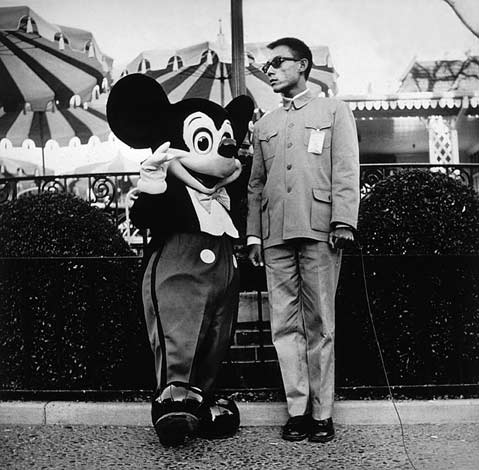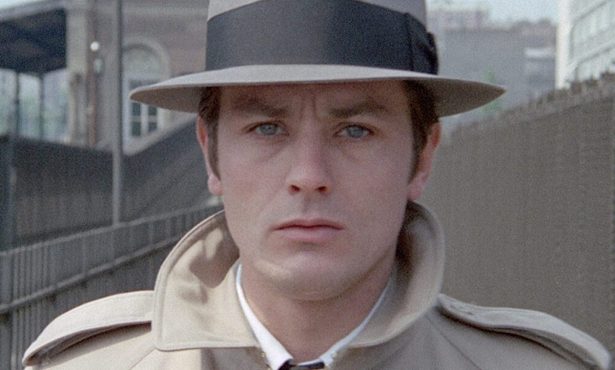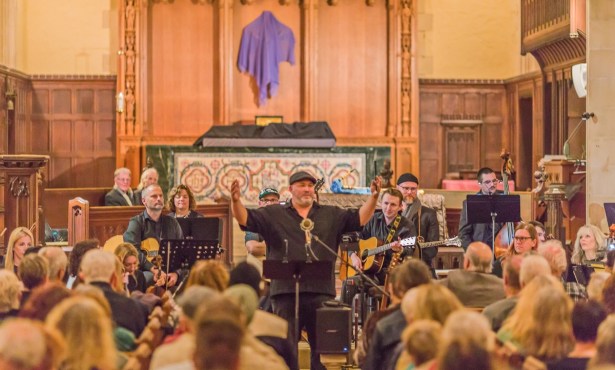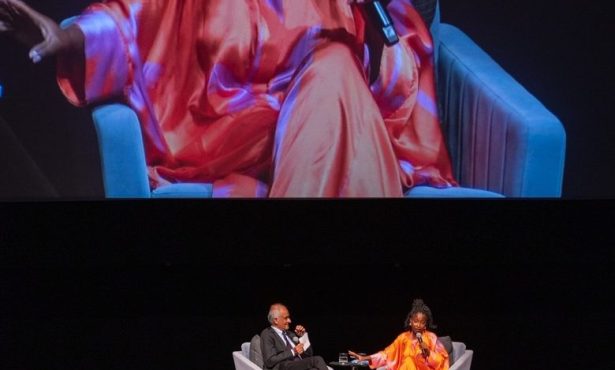Portrayal/Betrayal at the SBMA
Photo Portraits from Many Genres

SMILE OPTIONAL: Right when it seems that the portrait photo, due to such ubiquitous outlets as Instagram and Facebook, has calcified into utter predictability, along comes Portrayal/Betrayal at the Santa Barbara Museum of Art to hit “reset” on the whole phenomenon. The exhibition, which will be on view through September 16, occupies several of the museum’s large galleries with a series of riffs on the different ways that photographers have approached the portrait. Rather than settle for a reductive story tracing the origins and charting the development of photographic portraiture, curator Karen Sinsheimer has embraced the multiplicity of the genre and focused instead on the variety of ways in which it manifests itself. How many people, for example, would think to include portraits of animals as an important category in a show that also involves portraits of famous artists? Yet here they are, right next to one another, in sections named, respectively, “Primal Face: Animal Portraits” and “Face to Face: Artist Views Artist.”
And what photos these are; there are more than 100 of them in the entire show, mostly drawn from the SBMA’s estimable permanent collection. The big names are well represented, too; Henri Cartier-Bresson’s 1947 portrait of William Faulkner in his backyard with a pair of fox terriers, for example, tells you everything you need to know about what made HCB such a seminal figure. But the real genius here is the range of photographic endeavor itself rather than any individual artist. Time and time again, we see from yet another angle just how complex and nuanced the interpretive role of portrait photography has become. For example, in Don Normark’s brilliant “Pampas Grasses and Matching Dog, Phoenix, 1974,” a chance encounter between a tiny lapdog, some rather imposing vegetation, and the photographer’s eye yields a discovery that’s both immediately pleasing and hospitable to rich layers of cultural interpretation.
For many viewers, Portrayal/Betrayal will serve as a reminder of how influential photography became in the late 1970s, when Tseng Kwong Chi shot his unforgettable “Expeditionary Series” of self-portraits in front of world monuments. Here, Tseng is represented by what is probably his single strongest image, “Disneyland, CA, 1979,” which shows him in his trademark Mao suit and sunglasses, standing stone-faced next to Mickey Mouse. The picture is at once “so ’80s” and much more, as it looks forward not only to Tseng Kwong Chi’s longtime collaboration with Keith Haring, who owed so much to Disney, but also to his untimely death in 1990, when his artistic statement of visible detachment became a tragic reality. Elsewhere, there is a selection of Nicholas Nixon’s series “The Brown Sisters,” in which the artist captures his wife, Bebe, and her three sisters at yearly intervals, always standing in the same sequence but never holding the same pose. Today these iconic images by Nixon are, in a quiet way, as evocative of their era as anything from the period by such better-known names as Robert Mapplethorpe and Cindy Sherman.
Whether you are an avid young Instagrammer looking to up your game with some research into the photographic canon or a jaded aesthete waiting on the July 14 arrival of the Cindy Sherman blockbuster at San Francisco’s MOMA, this exhibition will satisfy your craving and activate your curiosity about what the portrait reveals, and what it does not.



